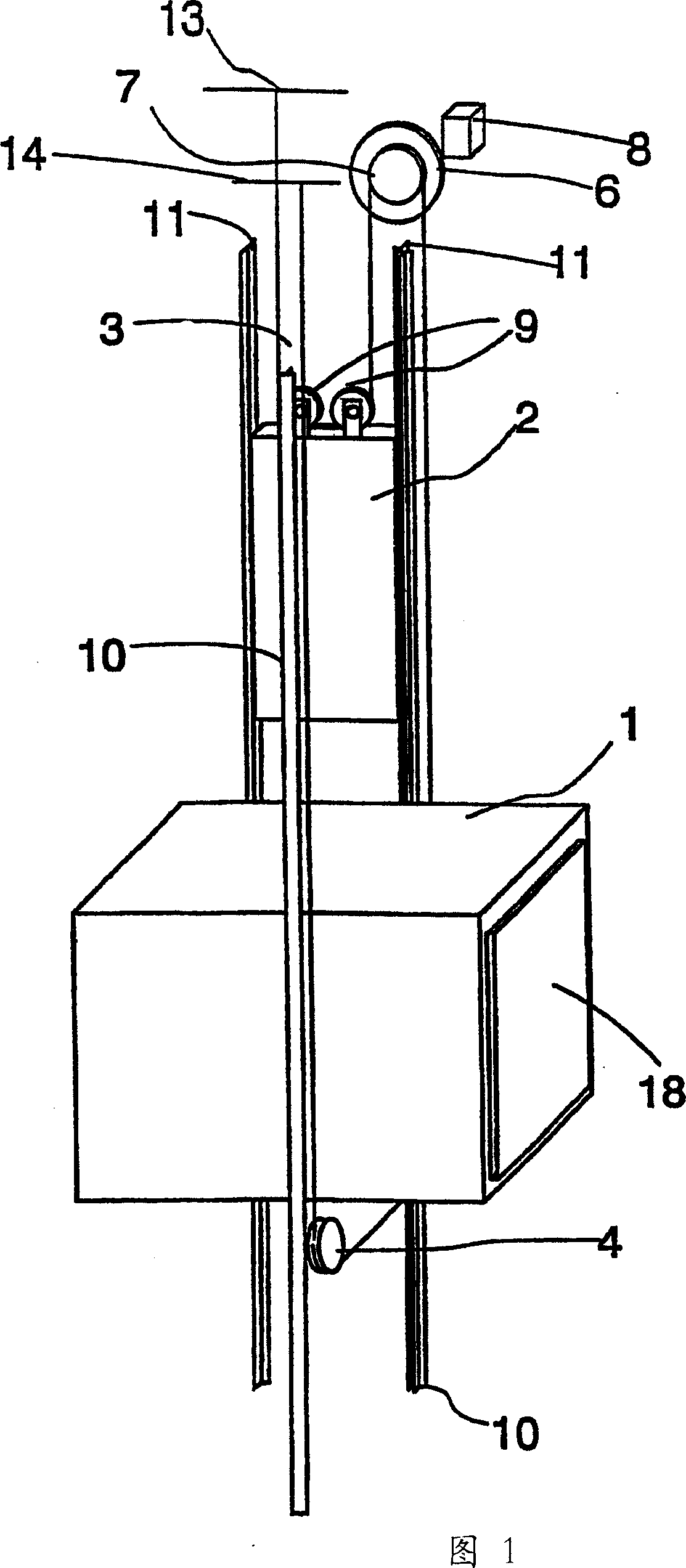Elevator and traction sheave of elevator
A cladding and rope groove technology, applied in the field of elevator traction sheave, can solve the problem that the embedded parts must be replaced regularly.
- Summary
- Abstract
- Description
- Claims
- Application Information
AI Technical Summary
Problems solved by technology
Method used
Image
Examples
Embodiment Construction
[0041] Figure 1 is a schematic diagram of the structure of an elevator. The elevator is preferably an elevator without a machine room, in which the drive machine 6 is placed in the elevator shaft, although the invention is also suitable for elevators with a machine room. The walking situation of elevator hoisting rope 3 is as follows: one end of each rope is fixed on the anchor seat 13 in the upper shaft shaft top that is positioned at the top of counterweight 2 paths, and counterweight then moves along counterweight guide rail 11. From the anchorage the ropes run downwards and around diverting pulleys 9 which hang the counterweight, which are rotatably mounted on the counterweight 2 and from there the ropes 3 run upwards to the traction ropes of the driving machine 6 Wheel 7 walks around the traction sheave along each rope groove on the sheave. From the traction sheave 7, the ropes 3 then run downwards to the elevator car 1 moving along the car guide rail 10, where the eleva...
PUM
 Login to View More
Login to View More Abstract
Description
Claims
Application Information
 Login to View More
Login to View More - R&D
- Intellectual Property
- Life Sciences
- Materials
- Tech Scout
- Unparalleled Data Quality
- Higher Quality Content
- 60% Fewer Hallucinations
Browse by: Latest US Patents, China's latest patents, Technical Efficacy Thesaurus, Application Domain, Technology Topic, Popular Technical Reports.
© 2025 PatSnap. All rights reserved.Legal|Privacy policy|Modern Slavery Act Transparency Statement|Sitemap|About US| Contact US: help@patsnap.com



